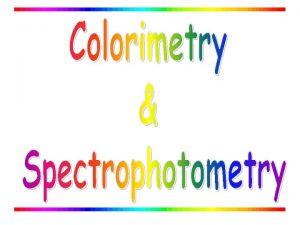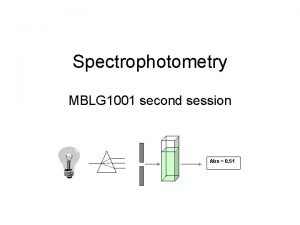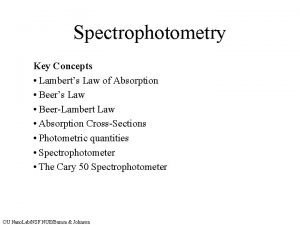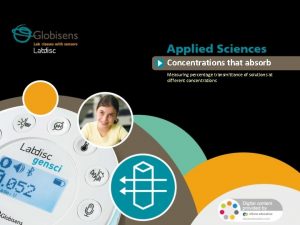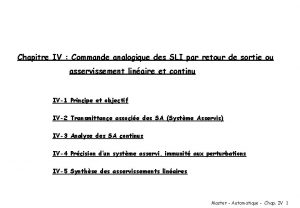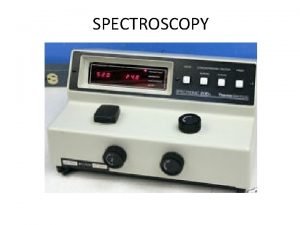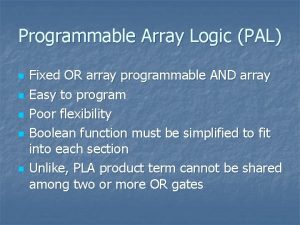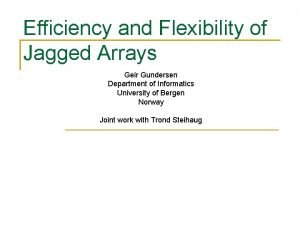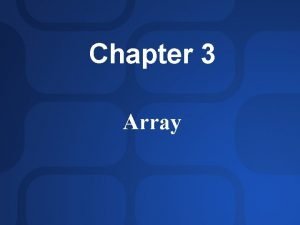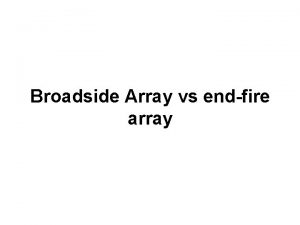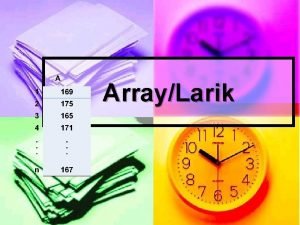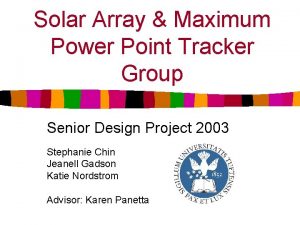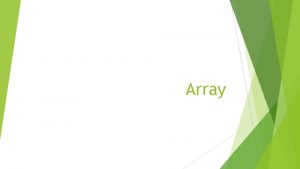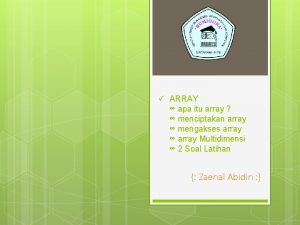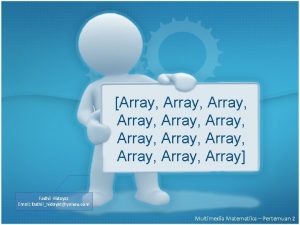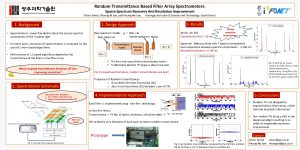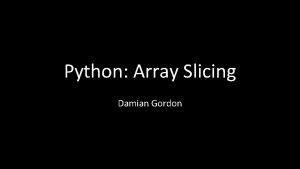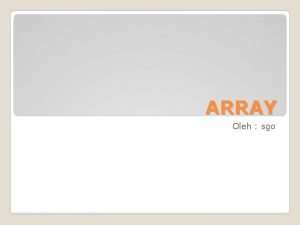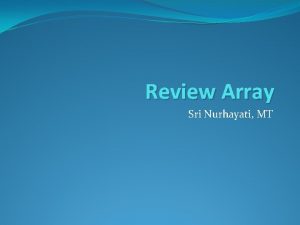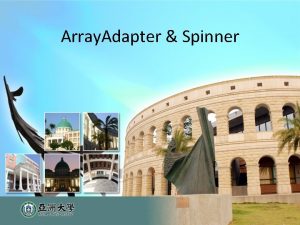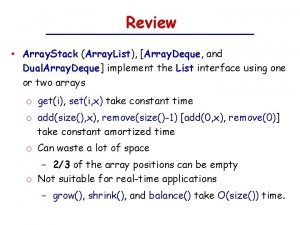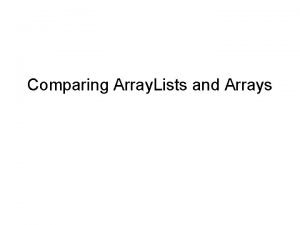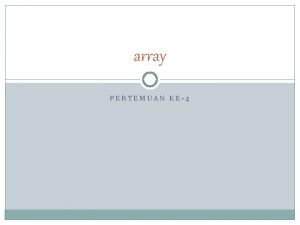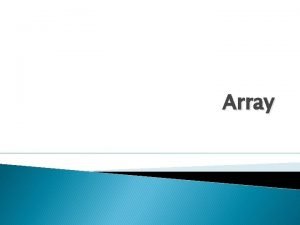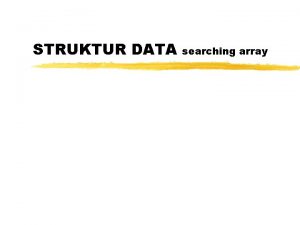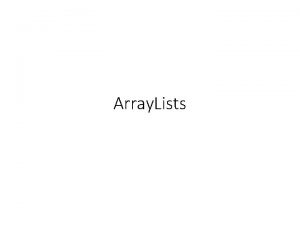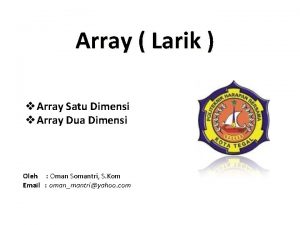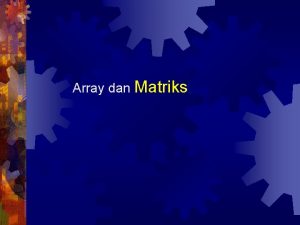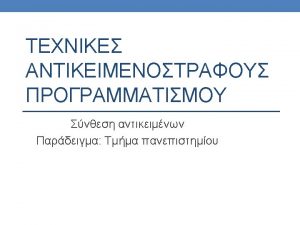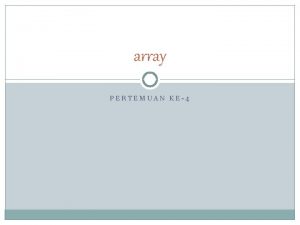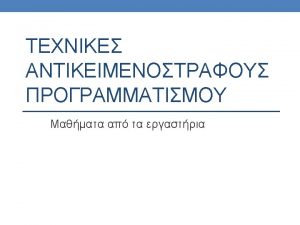Introducing Array is a PAL design HOYA Transmittance























- Slides: 23

Introducing

Array… is a PAL design HOYA Transmittance Control 3 D Design Software: • Models how human eyes truly see with each prescription • Compensates for wearing position • Modifies design for optimal intermediate and reading area placement • Balances design symmetry for binocular vision and reduced “swim effect”

OFFERS Optimization and customization in every prescription Wider viewing area for both myopic and hyperopic patients Sharper, clearer, distortion-free viewing Superior vision at all distances Larger cut outs make clear and sun options easy to order

Optically Optimized Rx • Powers Aspheric / atoric • Provides sharp, clear images not distorted by elliptical errors found in conventional surfacing • Allows the design to perform at its best, regardless of the power

Conventional Surfacing +0. 50 Different powers result in different design performance. +2. 25 +2. 00 x 60° -5. 00 +3. 00 x 180° Sph -3. 00 Prism 3. 0 D B in +4. 00 +2. 00 x 60° -5. 00 +4. 00 x 180° Sph -3. 00 Prism 4. 0 D B in +3. 00 +1. 00 x 60° -5. 00 +2. 00 x 180° +2. 25 +4. 00 x 60° Sph -4. 00 +1. 00 x 180° Prism 2. 0 D B in +4. 00 +1. 00 x 60° +2. 25 +3. 00 x 60° Sph -3. 00 Prism 1. 0 D B in Sph -1. 00 +2. 00 x 90° Prism 3. 0 D B in -5. 00 +1. 00 x 180° +3. 00 x 60° Sph -3, 00 Prism 2. 0 D B in Sph -7. 00 +4. 00 x 180° Prism 4. 0 D B in Images: Courtesy Rodenstock North America

Optical Optimization Atoric/aspheric back surfaces to optimize optical performance across all powers. Improved visual fields in ARRAY design.

As Worn Design The design is adapted from refraction environment to the real world wearing in a frame Wearing Position Refracted Position Pantoscopic angle @ 8° No pantoscopic angle Frame wrap 0° No frame wrap Viewing angle up to 40° Constant viewing angle Vertex distance 14. 5 mm Vertex distance 12 mm

4 Corridor Lengths: When the ECP Chooses ARRAY 11 mm, 13 mm, 15 mm , 1 7 m m HOYA defines corridor length as the distance in mm from Eye Point to 100% of add power Competitors define corridor length as the distance from eye point to 85% of add power…. 22 W Y 71

Array design with four corridor profiles: • 11 mm for 14 mm minimum fitting height • 13 mm for 17 mm minimum fitting height • 15 mm for 20 mm minimum fitting height • 17 mm for 23 mm minimum fitting height (corridor lengths are measured from fitting point to 100% of add power)

Why you might want to specify corridor length • Duplicate design between two or more pair of glasses, i. e. clear general purpose and sunwear. • Converting a bifocal wearer to a progressive • Power imbalance between right and left eyes where slaboff may be indicated (anisometropia)

Corridors: 11, 13, 15, 17 mm 11

Corridor Lengths & Power Profiles: When the ECP Does Not Choose; They will order ARRAY VL The software chooses: (corridor 1 7 When the fitting height is: (in mm) length) from to = ARRAY 0. 0 16. 0 = 11 17. 0 19. 9 = 13 20. 0 22. 9 = 15 23. 0 99. 9 = 17 Recommended minimum fitting height = 14 mm

Backside Free-Form Surfacing Array… is also Technology • Entirely free-form surfaced on the backside of a single vision, semi-finished lens blank with a design and optically optimized Rx powers. • Single vision, semi-finished lens blank; any material

Backside Benefits Wider fields of vision as compared to conventional PALs Depth of product availability: materials, treatments, wraps

The Difference Between ARRAY and Integrated Double Surface Front Vertical Component Back Horizontal Component Aspheric Atoric Rx All design and Rx components on back

Integrated Double Surface Technology Front surface, vertical component Ø Shorter eye rotation Ø Greater surface quality control Back surface, horizontal component Ø Wider perceived zones Ø Reduced peripheral distortion Ø Greater surface quality control

Array design markings 4 mm drop; from Eye Point to Prism Reference Point

Ordering ARRAY; no selection of corridor ARRAY VL in drop down menu (variable length). The computer picks the appropriate corridor length.

Ordering ARRAY with a specific corridor length Choose from these 4 options in the drop down menu. ARRAY 11 ARRAY 13 ARRAY 15 ARRAY 17

Ordering Array in Wrap Frames

Pricing

Availability

Introducing
 Hoya array
Hoya array Jacob de la hoya
Jacob de la hoya Absorbance and transmittance
Absorbance and transmittance Beer lambert law definition
Beer lambert law definition Transmittance and concentration relationship
Transmittance and concentration relationship Beer's law
Beer's law How to calculate percent transmittance
How to calculate percent transmittance Transmittance
Transmittance Lambert's law
Lambert's law Programmable array logic
Programmable array logic Pin grid array
Pin grid array Array yang sangat banyak elemen nol-nya, dikenal sebagai
Array yang sangat banyak elemen nol-nya, dikenal sebagai Jagged array vs multidimensional array
Jagged array vs multidimensional array Associative array vs indexed array
Associative array vs indexed array Endfire array
Endfire array Apa itu larik
Apa itu larik Keuntungan dari sparse array adalah:
Keuntungan dari sparse array adalah: Contoh program array 2 dimensi
Contoh program array 2 dimensi Photovoltaic array maximum power point tracking array
Photovoltaic array maximum power point tracking array Phrase signal
Phrase signal Introducing phonetics and phonology answer key
Introducing phonetics and phonology answer key 1941-1882
1941-1882 Quotation starters
Quotation starters Counterclaims in argumentative writing
Counterclaims in argumentative writing


